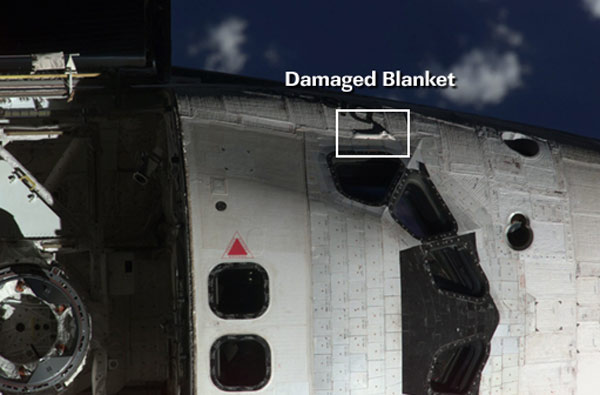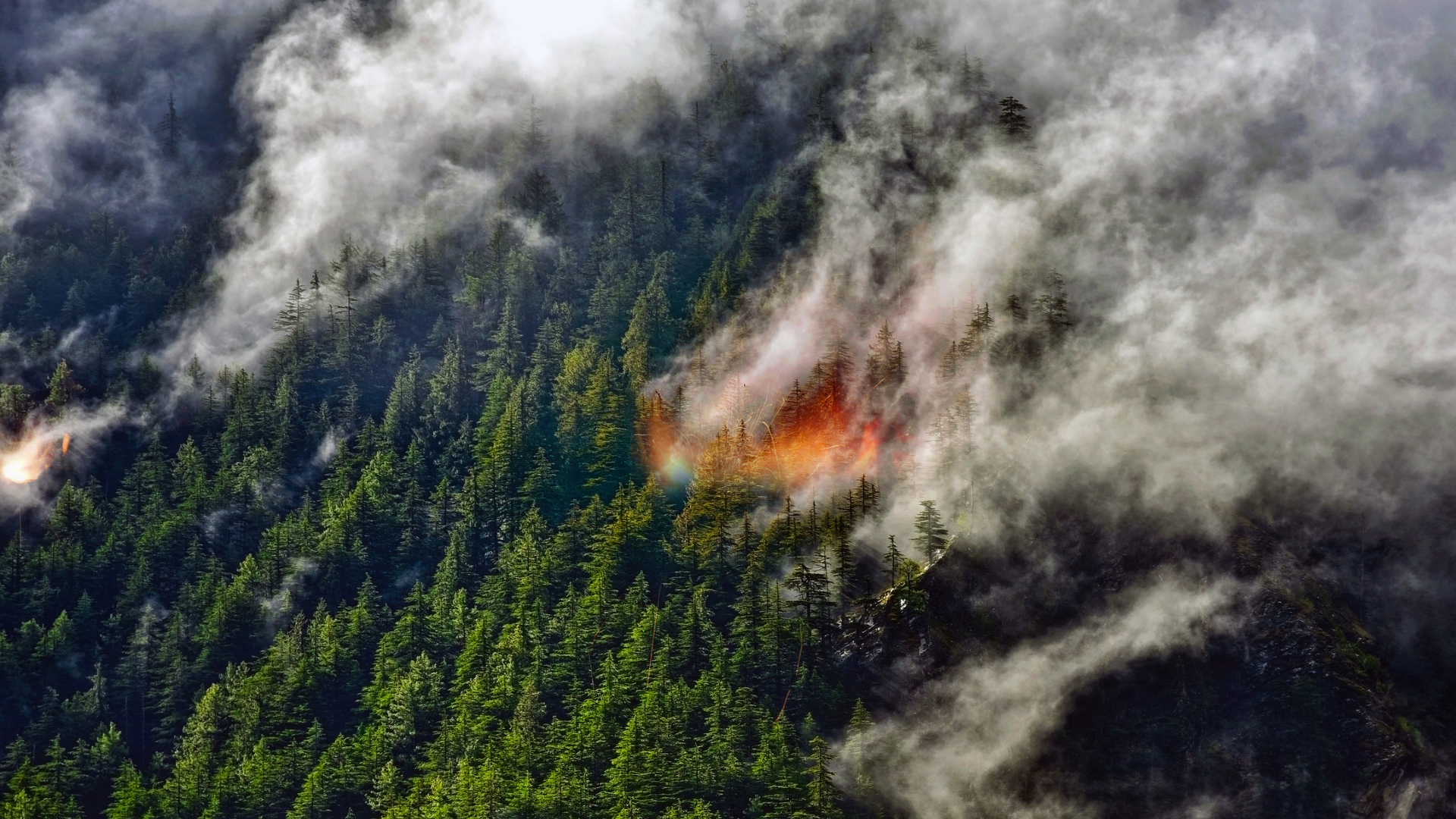With Blanket Issue Cleared, NASA Approves Discovery for Return to Earth

HOUSTON--Thespace shuttle Discovery was given a clean bill of health to return home Mondayafter mission managers declared a fourth spacewalk would not be needed torepair a damaged thermal blanket on the orbiter's hull.
"We have clearedDiscovery to reenter," said Wayne Hale, NASA's deputy shuttle program manager,during a briefing here Thursday at Johnson Space Center (JSC). "We believe thechances of anything untoward happening with this piece of fabric is remote."
Theannouncement came after a night of wind tunnel tests which proved that sizeablechunks of the small thermal blanket--damaged on launch and puffing out from justbelow the orbiter's leftmost flight deck window--would likely not rip off andsmash into a vulnerable section of Discovery. The blanket clearance was thelast piece needed to clear Discovery for landing. Its heat-resistant tiles andreinforced carbon carbon (RCC) panels were clearedduring earlier inspections, shuttle officials said.
Hale saidthat after wind tunnel tests of three concluded this morning, engineersbelieved there was only a 1.5 percent chance a piece of the blanket coulddetach from its mooring at time it could cause the worst damage--while theDiscovery was locked in supersonic flight between Mach 6 and Mach 1, about 10minutes before landing. In that worst case scenario, a piece of the blanketabout eight-tenths of an inch long could pull free and hit a critical area,such as the orbiter's tail.
"I will nottell you that there is zero risk," Hale said. "Even if this blanket were inpristine shape, there is not zero risk."
However, therisk of landing with the damaged blanket was much less than the risk of oncemore suiting up Discovery's two spacewalkers, STS-114 mission specialistsStephen Robinson and Soichi Noguchi, and sending themon a repair job.
This couldhave potentially created more debris that could harm the orbiter or astronauts'spacesuits, Hale said. Similarly, deciding to leave Discovery's crew on orbitto be retrieved by a rescue shuttle--a remote case that would call for thelaunch of Atlantis orbiter--also carries more risk than landing as there arestill concerns about external tank foam shedding during liftoff, Hale said.
Breaking space news, the latest updates on rocket launches, skywatching events and more!
Thedamaged blanketmeasures about 20 inches (50 centimeters) long and 3.8 inches wide (9.6 centimeter), though only about an eight-inch (20-centimeter) section puffedup during launch.
Flightcontrollers alerted Discovery's astronaut crew of the good news before missionmanagers had concluded their daily meeting Thursday, NASA officials said.
"Soichi we have good news," astronaut Julie Payette, servingas Discovery's CAPCOM. "The blanket is safe for return...so no EVA four."
"That's, Iwould say, good news," Noguchi replied.
Noguchi andRobinson have successfully conducted three spacewalks during their STS-114mission, the latest including a first-ever repair of the orbiter's tile-linedbelly. During that repair, Robinson pulled two space-filling strips ofceramic-lined cloth jutting out from between the heat tiles underneath theorbiter's nose.
Meanwhile,the entire STS-114 crew has completed their primary cargo transfer work,loading tons of fresh supplies into the International Space Station (ISS) andtransferring still more tons into a cargo pod for return to Earth, shuttleofficials said.
The shuttleis scheduled to land at NASA's Kennedy Space Center on Aug. 8.
"Thisflight has been conducted flawlessly," Hale said. "It is a thing of beauty."
- Fixing NASA: Complete Coverage of Space Shuttle Return to Flight

Tariq is the award-winning Editor-in-Chief of Space.com and joined the team in 2001. He covers human spaceflight, as well as skywatching and entertainment. He became Space.com's Editor-in-Chief in 2019. Before joining Space.com, Tariq was a staff reporter for The Los Angeles Times covering education and city beats in La Habra, Fullerton and Huntington Beach. He's a recipient of the 2022 Harry Kolcum Award for excellence in space reporting and the 2025 Space Pioneer Award from the National Space Society. He is an Eagle Scout and Space Camp alum with journalism degrees from the USC and NYU. You can find Tariq at Space.com and as the co-host to the This Week In Space podcast on the TWiT network. To see his latest project, you can follow Tariq on Twitter @tariqjmalik.
